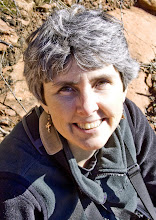Kalaupapa, on a peninsula on the north shore of Moloka'i (Hawaii) is former leper colony that for over 100 years was forced isolation (until 1969) for patients with Hansen's Disease (leprosy) in Hawaii. In 1969, the isolation was ended, but remaining former patients who chose to live there still reside.
The cemetery, at St. Philomena's church on the Kalawao side of the peninsula has marked graves on the left for members of the Sacred Heart order who ministered there, but the larger field contains hundreds of unmarked graves of patients who died. Their condition was exacerbated by the harsh conditions of the area and many died of pneumonia, tuberculosis, and gangrene.
Leprosy was introduced into Hawaii in the early 19th century. With no treatment, it quickly became a public health issue with no clear scientific answer other than isolation. Initial efforts, mishandled by government officials, to isolate patients in Honolulu failed with the facility turning into more of a prison than a health care facility. Anarchy reigned, there wasn't enough food, and very little health care was provided. People with leprosy were so afraid to go there that their illness was only discovered in late stages after infection had already spread to others. It was also easily visited by families and by others who then went on to complain about the conditions.
The solution was to move many of the patients to an isolated area on the next island over, Molokai, on a peninsula that could only be reached by boat or by traversing down sea cliffs that are the highest in the world. Patients were "settled" in a valley that wasn't even used in the winter by native Hawaiians due to its harsh winter weather and 100 inches of annual rain fall. The patients, many with advanced disease, were expected to farm the area to grow their own food and had construct housing from tents and materials they could find. The result was more anarchy with the strongest patients preying on the weakest for available resources.
It was into this that Father Damien went in the late 1860's to minister to the lepers and ended up creating some order, actually provided health care to the patients (and contracting leprosy himself) and getting the message out to the world of the need for more resources. The colony became a cause celebre back in the US with various celebrities taking on the cause (much like Brad Pitt and George Clooney do today only it was Robert Louis Stevenson and Rudyard Kipling). Father Damien was not popular with Hawaiian or church authorities who felt that he was seeking fame and they blocked much of his efforts.
As he was dying, Mother Marianne Cope, a Franciscan mother superior in Syracuse, NY decided to go to Hawaii to help the lepers and recruiting a number of sister nurses to accompany her, making a prophesy that none would contract leprosy-- she also instituted strict infection control measures. She continued Damien's work after his death soon after she arrived and is credited with bringing order and modern facilities and medical science to Kalaupapa. The colony was moved to the other side of the island, a hospital and housing were built and a school/orphanage for the children of the patients who had died or were too sick to care for them.
Today's Kalaupapa is a National Historic Park and designated as a place for learning the lessons of the past on how this vulnerable population was treated and as a place for reflection. Fewer than 20 former patients still live there with the only other residents being state public health officials to help care for them and national park personnel to maintain the grounds and facilities. You can reach it by flying in (my choice), hiking in, or by mule ride down the cliffs. If in Hawaii in Molokai, Maui, or Oahu it is a must see.
This photo is Infrared taken with an infrared converted Nikon D70, settings: 1/200 sec, f 11, 24 mm. For more photos of Kalaupapa, Moloka'i, and Oahi, go to my Flickr feed.
Tuesday, January 25, 2011
Kalaupapa National Historic Park
Subscribe to:
Post Comments (Atom)

No comments:
Post a Comment